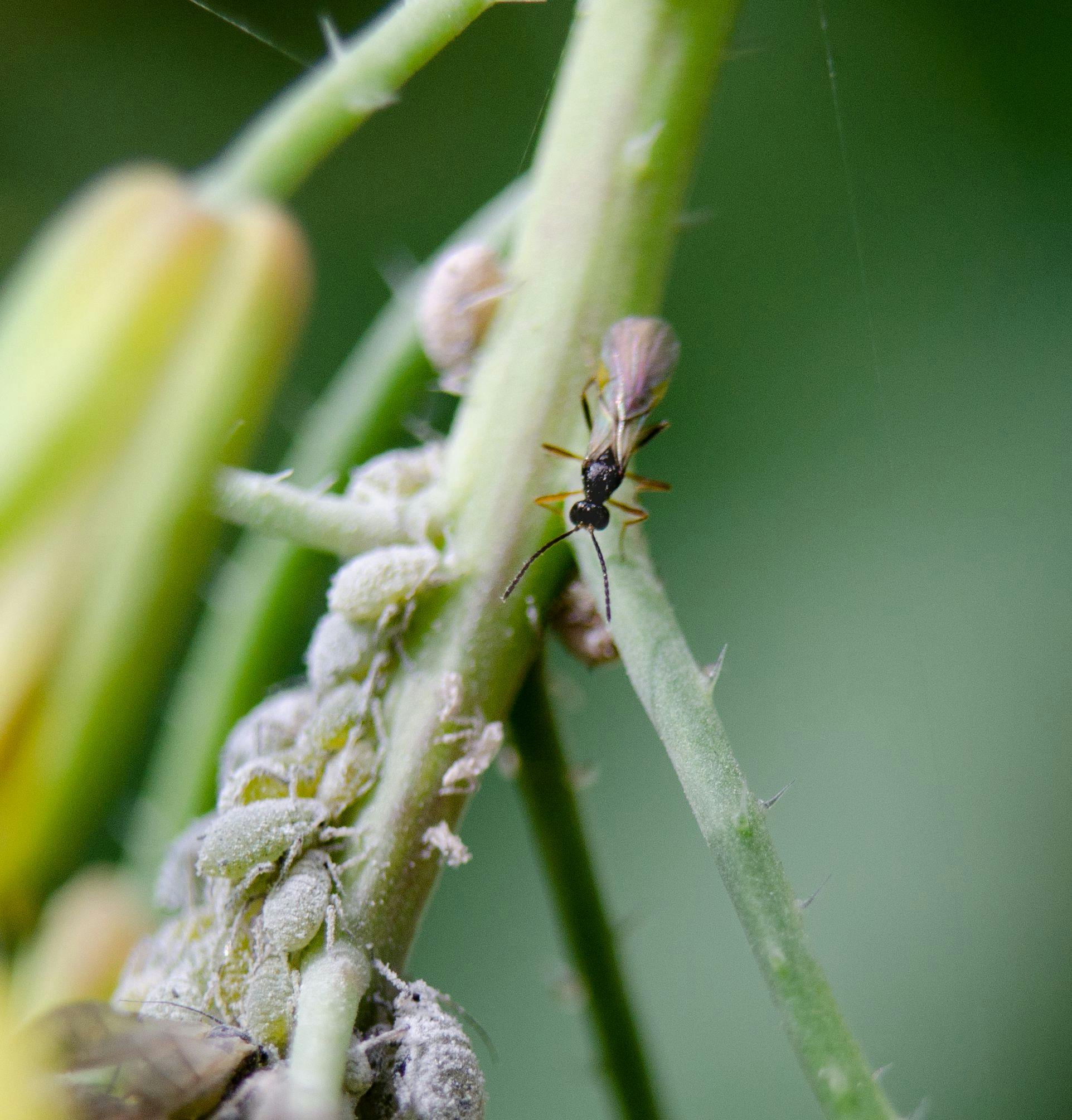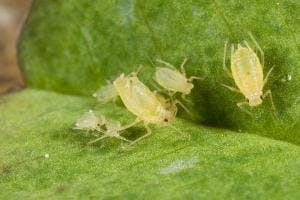Summary
Aphid parasitoids are small wasps, typically measuring 2-5 mm in length, with a slender body and distinctive narrow waist. They are commonly black or brown in colour.
In Australia, various families of parasitoid wasps contain numerous species that target aphids. The most prevalent genera are Aphidius, Aphelinus, Diaeretiella, Lysiphlebus, and Trioxys (subfamily Aphidiinae).
Mature female wasps lay their eggs inside aphid bodies, often depositing hundreds of eggs during their lifespan. The parasitoid's immature stages develop entirely within the aphid, feeding on it from the inside until pupation and emergence. This process results in the aphid's skin hardening, swelling, and drying into a bronze-colored "mummy."
The presence of aphid "mummies" in crops indicates ongoing parasitism, suggesting that many more aphids have likely been parasitized as well.
Developmental times vary depending on the species and temperature, typically taking about one to two weeks for the immature parasitoids to emerge as adults.

Diet
Aphid parasitic wasps are specialists, usually attacking just a single pest species. They can only live where and when their host (aphids) occurs. Importantly, aphid parasitoids exclusively attack aphids and do not cause harm to plants, other insects, livestock, or humans.
Pests Attacked*
*with pesticide resistance
Monitoring guidelines
Aphid parasitoids can be monitored visually, through the observed presence of aphid ‘mummies’, which are bronze and bloated amongst aphid colonies. Recording the relative number of ‘mummies’ and live aphids can provide an indication of the impact the aphid parasitoids are having on the aphid infestation.
The small wasps may be visible in close proximity to aphid colonies, and a sweep net can be utilised to aid in the monitoring of aphid parasitoids. However, they are flighty and can be difficult to identify.
Sweep net: Hold the handle of the sweep net and make sweeping motions through crop. Move the net back and forth in a semi-circular or figure-eight pattern to capture insects present in the vegetation.
A noticeable increase in aphid parasitoid populations, accompanied by a reduction in aphid numbers, serves as a key indicator of their impact.
Habitat management
Most parasitoids can be found in any habitat where aphids are, including both greenhouse and open field crops. They thrive in protected environments with well-developed foliage, such as crops. Additionally, some species can be bought commercially for release.
Creating diverse habitats with hedgerows, cover crops, brushpiles and wildflower strips can support parasitoid population, by providing additional food sources, nesting sites, and protection from pesticide exposure or extreme weather conditions. This aids parasitoid survival during non-crop periods or when crop conditions are suboptimal, improving early season control.
Many parasitoid species are highly sensitive to insecticides, and excessive use can be detrimental to parasitoid populations and their effectiveness as biological control agents.
Consider adopting integrated pest management (IPM) practices, which involve using pesticides judiciously and as a last resort. Targeted application of pesticides, avoiding broad-spectrum ones, and selecting insecticides that have minimal impact on non-target organisms can help preserve parasitoid populations.
Chemical toxicity
To assist growers and advisors in making informed choices around insecticide use in Australian grain crops, the below table summarises the toxicity of foliar chemical sprays on aphid parasitoids.
The impact ratings in the table are colour-coded, indicating the level of impact on beneficial insects. The colour scheme is as follows:
- Green: low impact (<30% mortality)
- Yellow: moderate impact (30-79% mortality)
- Orange: high impact (80-99% mortality)
- Red: very high impact (>99% mortality)
Data shown here is directly from the Beneficials Chemical Toxicity Table.
Ratings for toxicity are based on International Organisation for Biological Control (IOBC) protocols for laboratory studies and reflect percent mortality of insects.
These values represent mortality under controlled laboratory conditions – impacts may vary in the field, especially if multiple applications of a chemical occur.




